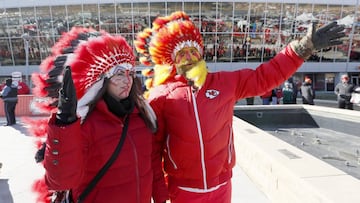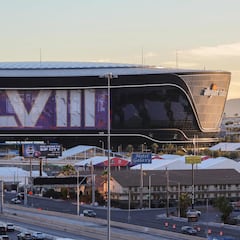Why do the Chiefs have a wolf as their mascot?
Since his introduction, the wolf, embodied by the energetic KC Wolf, has become an iconic symbol of Kansas City, connecting the team with its fan base.


The Kansas City Chiefs have been celebrating their success in repeating their Super Bowl participation in 2024. In light of their achievement, it is important to recognize a significant figure in their history - their mascot.
For almost 35 years, the Chiefs’ mascot has energized fans and represented the team’s spirit. In this exploration, we delve into the history of Casey Wolf, the iconic mascot of the Kansas City Chiefs.
War Paint
The Chiefs’ mascot legacy began during their inaugural season in 1963 when they introduced a rare sight in early NFL years - a live horse named War Paint. This pinto-colored paint horse, portrayed by three different horses over its 26-year run, quickly became a symbol of the team. War Paint, ridden by Bob Johnson, with an American Indian headdress reminiscent of the team’s logo, circled the field with lightning speed, becoming a fan favorite.
As the Chiefs faced challenges, including moving to Kansas City in 1963 and creating the AFL, War Paint remained a constant presence. In 1967, the Chiefs played in the first-ever Super Bowl, coining the term “Super Bowl” itself, but fell short against the Green Bay Packers.
War Paint participated in various events beyond games, attending parades, festivals, and community gatherings. In the 1970s, the Chiefs faced ups and downs on the field, but the introduction of Arrowhead Stadium in 1972 solidified their identity. However, this era witnessed War Paint’s occasional mishaps, including falls and interactions with opposing fans.
KC Wolf
The 1980s brought change, both on and off the field. War Paint faced health challenges, leading to his retirement in 1989. The Chiefs, embracing new ownership and evolving sensibilities, decided to retire War Paint and explore a modern mascot concept.
Enter KC Wolf, introduced on September 17, 1989, during the Chiefs’ home opener against the Raiders. KC Wolf became the NFL’s first official modern mascot, breaking new ground. The Kansas City Chiefs adopted the wolf as their mascot to honor a group of passionate and loud fans known as the “wolf pack.” During the team’s Glory Days at Municipal Stadium in the 1960s, this unofficial fan club called itself the Wolf Pack, and they were known for their fervent support of the Chiefs.
In homage to this dedicated fan group, the Chiefs made their mascot a wolf when they introduced KC Wolf in 1989. This decision paid tribute to the fans who had been a vibrant part of the team’s history and added a unique and dynamic element to the team’s identity.
Related stories
Crafted by Harrison Ericson Incorporated, the same company responsible for creating the iconic Philly Phanatic, KC Wolf’s costume boasted impressive design details. The mascot, known for his energy and distinctive appearance, quickly became a fan favorite.
As the Chiefs continued their journey on the field, KC Wolf remained a constant presence, representing the team’s spirit and engaging fans with his exuberant antics. The transition from War Paint to KC Wolf marked a significant chapter in the Chiefs’ mascot history, blending tradition with a modern and dynamic approach.


